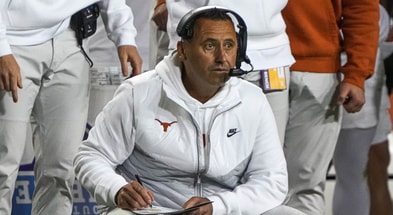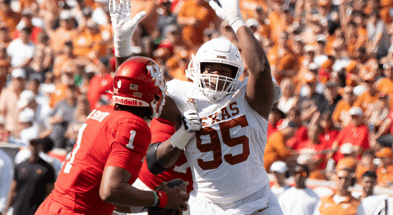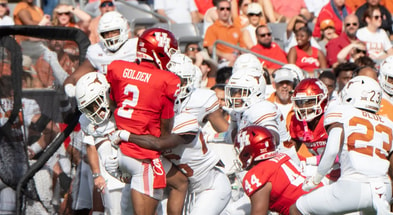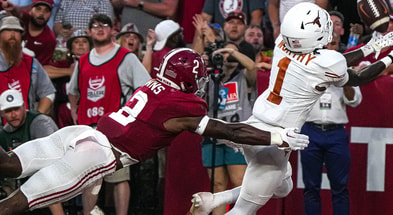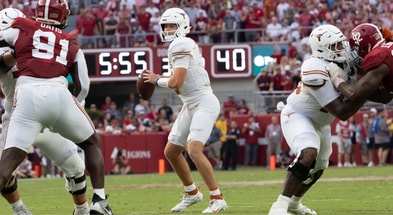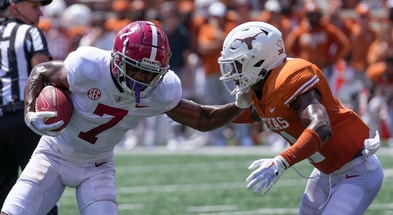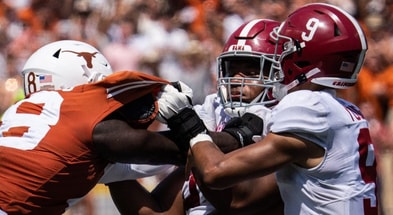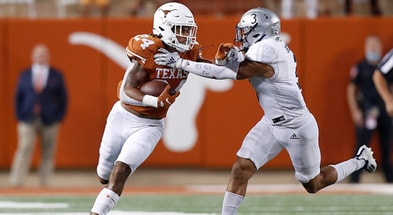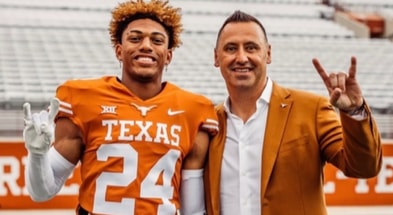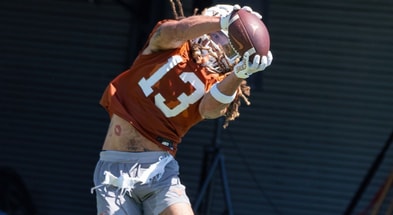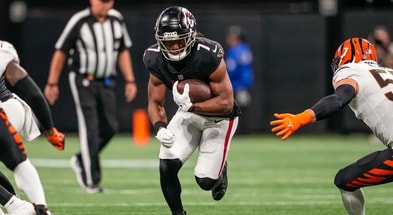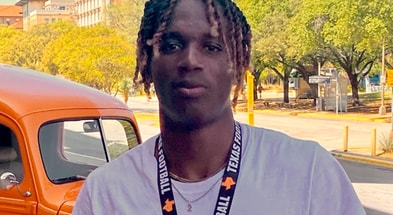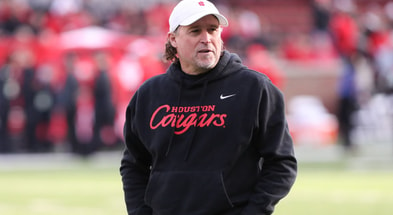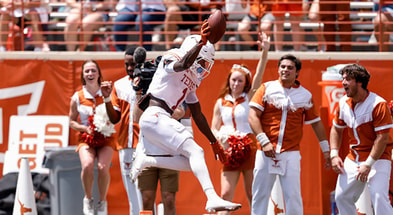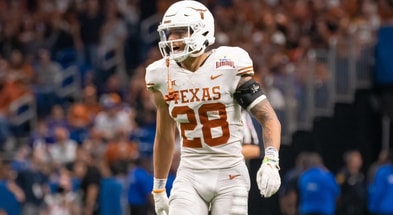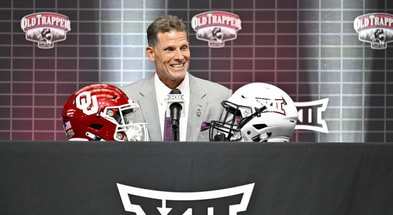TCU embraces Metroplex-ball
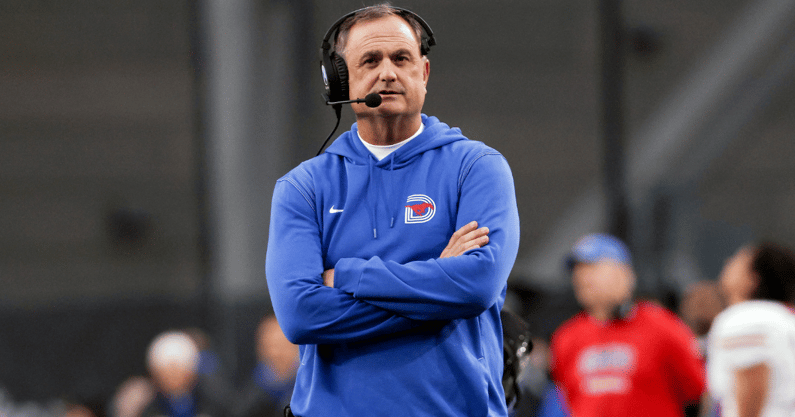
TCU has made their decision on how to replace their legendary head coach, Gary Patterson and it’s one which makes a great deal of sense.
For years, the Horned Frogs were defined by the following strategy.
- Recruit raw athletes from across the state and develop them into hard-nosed, disciplined football players with strength and conditioning and good, hard coaching.
- Play Patterson’s flexible, 4-2-5 defense with it’s emphasis on multiplicity and the opportunities said multiplicity created for Patterson to call the defense to attack opposing tendencies.
- Run a power-spread or spread-option offense designed to use spread spacing to allow the offense to run the ball, protect possession, and control games without exposing the defense.
It all worked pretty well until they reached the Big 12, but the offensive systems in this league were well suited to attacking Patterson’s defense and his conservative offenses struggled to make up for it.
RPOs were a big part of killing Patterson’s style. His ability to disguise and then swarm your tendencies with numbers didn’t work out so well when teams were generating post-snap, run-pass conflicts with RPOs and traditional play-action. The hallmark of this actually occurred during TCU’s best season, 2014.
Baylor overcame a 58-37 deficit primarily by running the same D-gap power RPO play over, and over, and over again while Patterson wiped sweat from his brow and stared daggers onto the field.
Gary Patterson’s formula was really designed for TCU the Conference-USA and Mountain West power, not TCU the Big 12 program. Within a few years of entering the Big 12 the Frogs were leveraging their success under Patterson and fantastic positioning within the DFW Metroplex to recruit at a higher level than all but Texas and Oklahoma. However, they weren’t able to translate this talent within their defense/run game formula into Big 12 Championships or even consistent winning seasons.
TCU fell into a malaise defined by solid but unspectacular defense, limited and struggling quarterback play, and the squandering of multiple NFL athletes.
Their adjustment? Hire Sonny Dykes and play Metroplex-ball.
Metroplex-ball
I invented this term myself relatively recently to define a particular style and strategy for the TCU Horned Frogs which is essentially what they’ve been doing at SMU.
The idea is to embrace and seek to channel the defining features of DFW high school football and the players it generates. There are a number of different programs across the Metroplex winning with a variety of different styles, but as a general rule the region produces the following sorts of players if you’re recruiting from the cream of the crop.
- Exceptional skill athletes who are often total divas.
- Hard-nosed, highly skilled, but often physically limited offensive linemen.
- Extremely skilled, developed, and experienced quarterbacks with thousands of banked reps in higher level passing attacks.
- Limited numbers of trench bullies on either side of the ball.
You can find elite D-linemen and O-linemen in the Metroplex but there aren’t as many as you might think and the standout ones get a lot of attention, so they tend to get poached by the bigger regional powers or National recruiting powers like Alabama, Georgia, and Ohio State.
You can’t really hide great players in the Metroplex, everyone is there scouting and recruiting from around the country, and programs like Michigan, Notre Dame, UCLA, Stanford, etc are always narrow-casting for guys who might be intrigued by the possibility of going out-of-state to play their football.
Here are some of the biggest, most effective powers in the DFW high school football scene who define what the region has to offer.
Duncanville Panthers: Today’s strongest South Dallas power, a program which routinely finds some of the area’s best football players on their roster (they often have more blue chip OL/DL than much of the Big 12), and then typically some good, more raw athletes. The South Dallas power in a given era of HS ball will tend to be defined by an athletic defense and whatever the popular offense of the day is designed to focus the ball into the hands of 1-2 elite skill athletes in the run game. For older fans, think 1988 Dallas Carter.
Famous products: Savion Byrd, Omari Abor, Ja’Quinden Jackson
Allen Eagles: The Eagles are a type of North Dallas power which has existed in Texas HS ball for some time. There’s a few like them, the Denton schools Ryan and Guyer, are also emblematic of the same feature. They have massive schools, easy open enrollment, and they have a passionate and devoted institution dedicated to luring in talent from around the region and stockpiling great players to work alongside hard-driven local kids.
Famous products: Kyler Murray, Theo Wease
Highland Park Scots: The team of the upscale sub-area of Highland Park within Dallas itself, the Scots tend to crank out ultra-skilled quarterbacks and offensive linemen. Their receivers are typically very skilled but limited athletes, you’ll find them among the walk-on ranks at many Big 12 programs.
Famous products: John Stephen Jones, Chandler Morris
Southlake Carroll Dragons: Much like Highland Park but with more big, maxed out offensive linemen, tight ends, linebackers, a D1 quarterback, and usually 1-2 really good skill athletes. Both Highland Park and Southlake Carroll have made their names by having highly skilled offenses with players developed by long practice hours and private coaches into semi-professional machines.
Famous products: Quinn Ewers, Andrej Karic, Blake Smith, Kenny Hill
Aledo: Joseph Cook calls Aledo “the Katy Tigers of the Metroplex” and that’s about as good a descriptor as it gets. They have a vaguely similar approach as Allen or Denton Ryan/Guyer but they’re more isolated on the west side of Fort Worth and they routinely crank out offensive linemen and defenders and then always have a D1 running back and safety or two to be featured while surrounded by infrastructure components of varying talent levels.
Famous products: Jase McClellan, B.J. Allen, Wyatt and Wes Harris
Credit to Patterson for building defenses within the region, I’ve talked to someone with experience coaching inside and outside of DFW who often called it the “softplex” because of the struggles to get kids to buy into team defense and physical play.
Top 10
- 1Trending
UK upsets Duke
Mark Pope leads Kentucky to first Champions Classic win since 2019
- 2
Second CFP Top 25
Newest CFP rankings are out
- 3
Kirby Smart reacts
UGA coach responds to CFP Committee snub
- 4
Nico Iamaleava
Tennessee QB dealing with concussion ahead of Georgia game
- 5
Couches on fire
State Street burning couches after Kentucky upsets Duke
Patterson had his own way of doing things and it wasn’t the answer to, “if you were aiming to harness the best features of the Metroplex and make TCU a quintessential Metroplex team, how would you do it?”
On the other hand, Sonny Dykes has answered that question in SMU and consequently may be just the guy to take TCU from “overachieving private school out in Fort Worth” to “resource-rich Big 12 powerhouse.”
Dykes’ Metroplex-ball
So to review, here was Gary Patterson’s basic approach to winning at TCU:
- Recruit raw athletes from across the state and develop them into hard-nosed, disciplined football players with strength and conditioning and good, hard coaching.
- Play Patterson’s flexible, 4-2-5 defense with it’s emphasis on multiplicity and the opportunities said multiplicity created for Patterson to call the defense to attack opposing tendencies.
- Run a power-spread or spread-option offense designed to use spread spacing to allow the offense to run the ball, protect possession, and control games without exposing the defense.
Here’s the approach Sonny Dykes developed at SMU:
- Recruit as many of the Metroplex’s highly skilled offensive players and skill talents as you can.
- Recruit the talented ones you initially couldn’t who go elsewhere and aren’t happy for whatever reason (homesick, not enough playing time/opportunity, system doesn’t suit me, etc).
- Employ a spread-I offense with Air Raid roots but based in generating run/pass conflicts and attacking the middle of the field with crossing routes and other vertical patterns from the slot.
- Maintain a pipeline of high school and transfer, high level quarterback talents who trust Dykes to make them look good with those run/pass conflicts and aggressive passing game.
- Figure it out on defense and maintain a supply of good skill athletes from the Metroplex or portal.
The last part isn’t great. SMU is playing their best defense yet under Dykes this season and yielding 27.9 ppg. His Cal teams were notorious for scoring a ton and giving up an equal or greater amount of points.
The “scoring lots of points” part is good though, good enough to wonder if Dykes might be able to hire a defensive coordinator and staff who could help break through the one missing piece to the SMU formula.
In four years under Dykes the Mustangs have never had a quarterback who failed to be at least as effective as the best TCU quarterback over the same time period. They’ve also become a veritable NFL factory at wide receiver and routinely managed to develop athletically limited offensive linemen to use leverage, angles, techniques, and then the greater run/pass conflicts to allow them to run the football.
The missing ingredient is having a hard-nosed defensive front who fits the run with physicality and precision and successfully leverages the regular presence of good skill athletes in the defensive backfield. That’s always one of the harder parts, the Texas Longhorns have struggled here as well, Oklahoma hasn’t been terribly consistent either.
Metroplex-ball in the future Big 12
There’s two big reasons for TCU to be pursuing this strategy with their big, post-Patterson hire. The first relates to maximization of TCU football, producing the best possible version of Horned Frog football. The second relates to relative advantages in the future Big 12.
Here’s a glimpse into what the Big 12 will look like when Oklahoma and Texas leave and are replaced by BYU, Cincinnati, UCF, and Houston.

Anything stand out here?
I’ll offer a suggestion, the last four years of Sonny Dykes at Cal and SMU featured considerably better and more consistent quarterback play than you’ve seen at any of the other 11 schools.
Here were Dykes’ quarterbacks over said period:

This future league is open and vulnerable to a team who can do the best job of recruiting DFW receivers and quarterbacks and lighting up opponents with offense.
Texas Tech will pursue the same strategy, but it’ll be hard to do it better than Dykes at TCU. Baylor is currently following a very different formula and God only knows what things will look like there in future seasons. Houston is more or less on a similar path with Dana Holgorsen but the Cougar program is better maximized with defense and it’ll be hard to out-offense Dykes at TCU. You can go down the list and see, there’s no school better positioned to win with quarterback play and efficient offense than the one situated in the Metroplex, there’s also no school better positioned to win with quarterback play.



